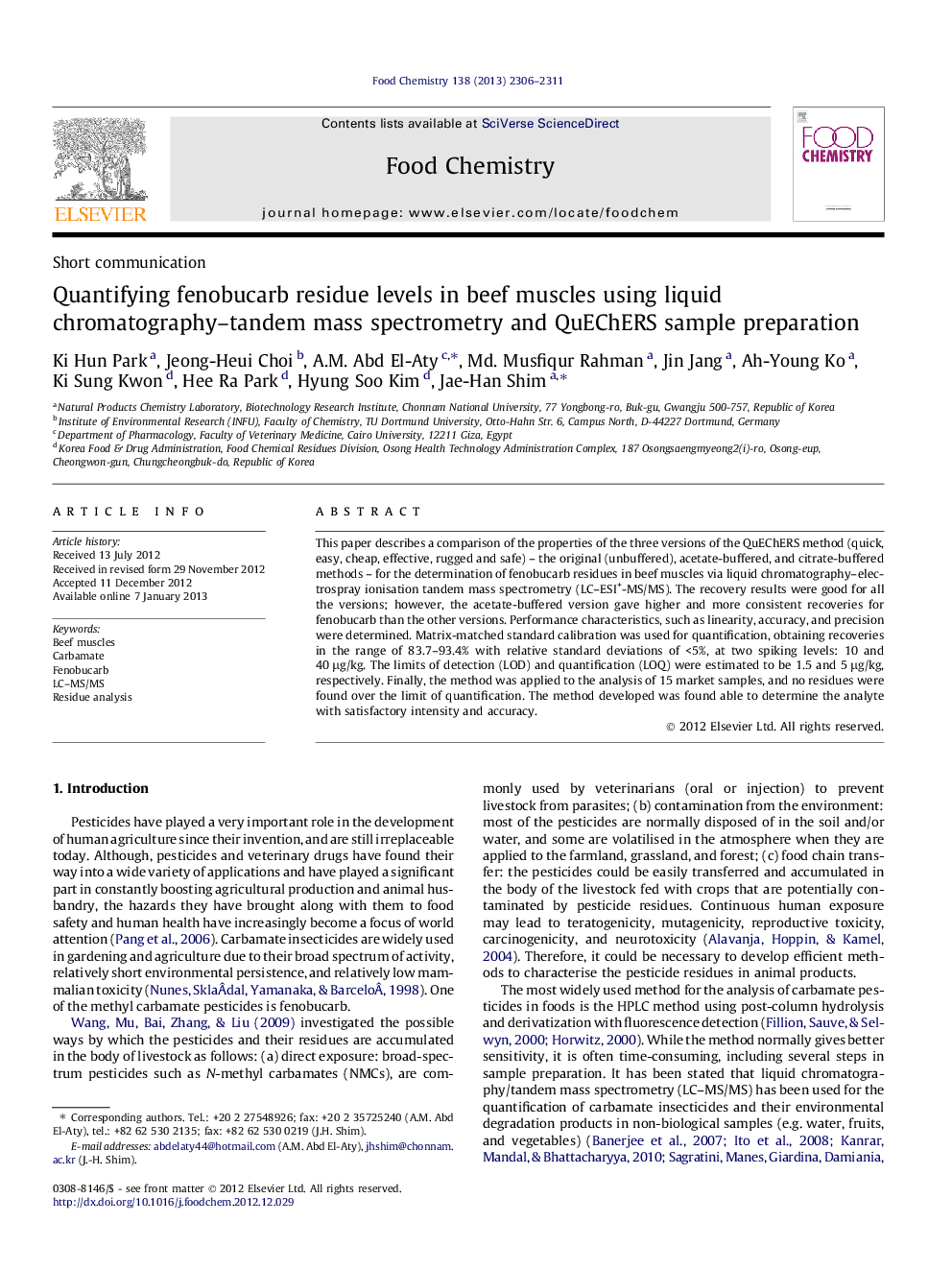| Article ID | Journal | Published Year | Pages | File Type |
|---|---|---|---|---|
| 1185538 | Food Chemistry | 2013 | 6 Pages |
This paper describes a comparison of the properties of the three versions of the QuEChERS method (quick, easy, cheap, effective, rugged and safe) – the original (unbuffered), acetate-buffered, and citrate-buffered methods – for the determination of fenobucarb residues in beef muscles via liquid chromatography–electrospray ionisation tandem mass spectrometry (LC–ESI+-MS/MS). The recovery results were good for all the versions; however, the acetate-buffered version gave higher and more consistent recoveries for fenobucarb than the other versions. Performance characteristics, such as linearity, accuracy, and precision were determined. Matrix-matched standard calibration was used for quantification, obtaining recoveries in the range of 83.7–93.4% with relative standard deviations of <5%, at two spiking levels: 10 and 40 μg/kg. The limits of detection (LOD) and quantification (LOQ) were estimated to be 1.5 and 5 μg/kg, respectively. Finally, the method was applied to the analysis of 15 market samples, and no residues were found over the limit of quantification. The method developed was found able to determine the analyte with satisfactory intensity and accuracy.
► Fenobucarb residue levels were determined in beef muscles using LC–MS/MS. ► Three versions of the QuEChERS methods were used for sample preparation. ► Recovery results were good for all the versions. ► The acetate-buffered version gave higher and more consistent recoveries than others. ► The developed method determined the analyte with satisfactory intensity and accuracy.
